cultural travel
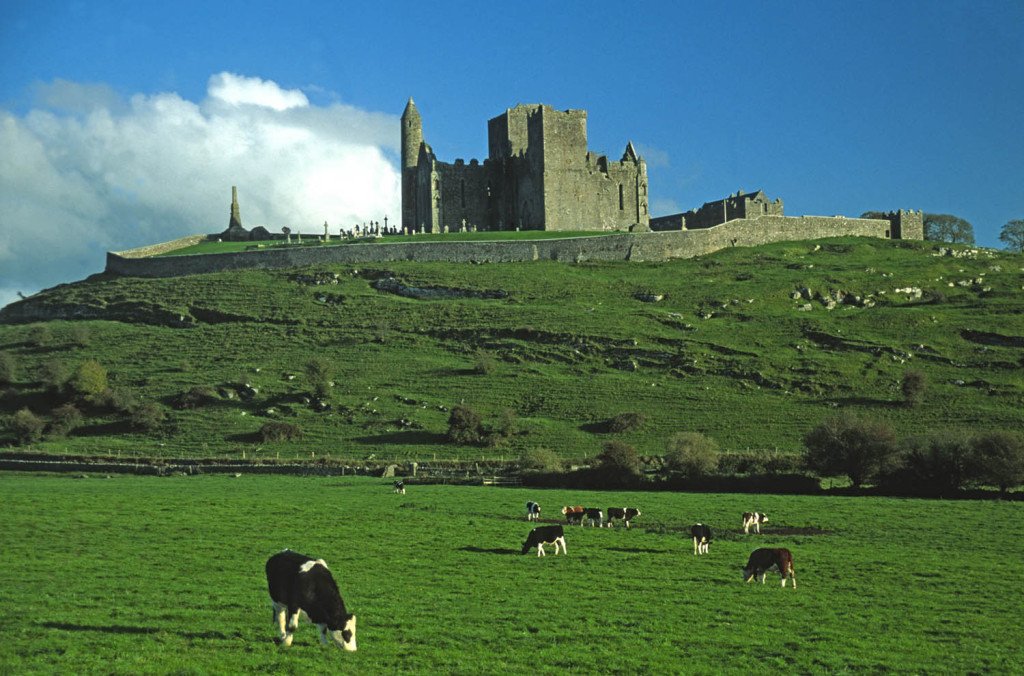
I admit I was a little surprised several years ago when I toured the entire island of Ireland and discovered that St. Patrick — the patron saint of Ireland and largely credited with bringing Christianity to Ireland — actually did much of his missionary work and is reputedly buried in County Down, which is now part of Northern Ireland, which is part of the United Kingdom.
It was less than a quarter-century ago (April 1998) that “The Troubles,” as they were called — an often violent class-related and sectarian three-decade conflict in Northern Ireland between those who wanted to remain in the UK (mostly Protestants) and those who wanted to break away and join the Republic of Ireland (mostly Catholics) — ended in the Good Friday Agreement to settle the issue peacefully.… Continue reading

Today (February 12 in 2021) is the first day of the Chinese Lunar New Year — also known as the Spring Festival, which lasts for 15 days.
This is the Year of the Ox, the second sign of the Chinese Zodiac. Legend has it that when the Jade Emperor summoned the presence of a dozen animals, he declared that the one that arrived first would head the 12-sign Zodiac. The ox was kind enough to give the rat a ride, but the tricky rat hopped off to cross the finish line first. Thus the ox goes second.
According to the Travel China Guide, the ox is the symbol of diligence, persistence, and honesty, and people born under that sign are industrious, cautious, faithful and always glad to offer help — even to rats.
For baby boomers, ox sign years are 1949 and 1961. So we wish oxen readers an… Continue reading

The last time my wife and I were in Oslo, we did exactly what contributing writer Robert Waite advises against: we skipped town too quickly, flying off to Bergen and our Hurtigruten coastal voyage the day after we arrived.
Walking around Oslo during our free afternoon there, on a beautifully sunny late spring day, we soon realized our mistake. It had been some years since we’d been to the city, and much had changed — by the looks of it, much for the better. But I’ll let Bob delve into all that.
One particular memory stands out among the people we encountered there.
After having dinner at a local restaurant on the evening of our arrival, I left a tip in cash that I knew was way too… Continue reading

Like Contributing Writer Robert Waite, I was also thrilled to finally set foot on the Rock of Gibraltar — in our case, it was a few years ago, when my wife and I approached it by sea from Morocco.
Previously, we had passed it a few times while crossing the Straits of Gibraltar from Spain to North Africa, but from a distance all you see is a…rock. Not that it isn’t an impressive rock — one time I wasted almost an entire roll of film trying to photograph it from too great a distance — but when you approach it it quickly becomes apparent how alive it is with people and activity.
I’ll let Bob take it from here — with a hearty recommendation that you visit when you can.
By Robert Waite… Continue reading
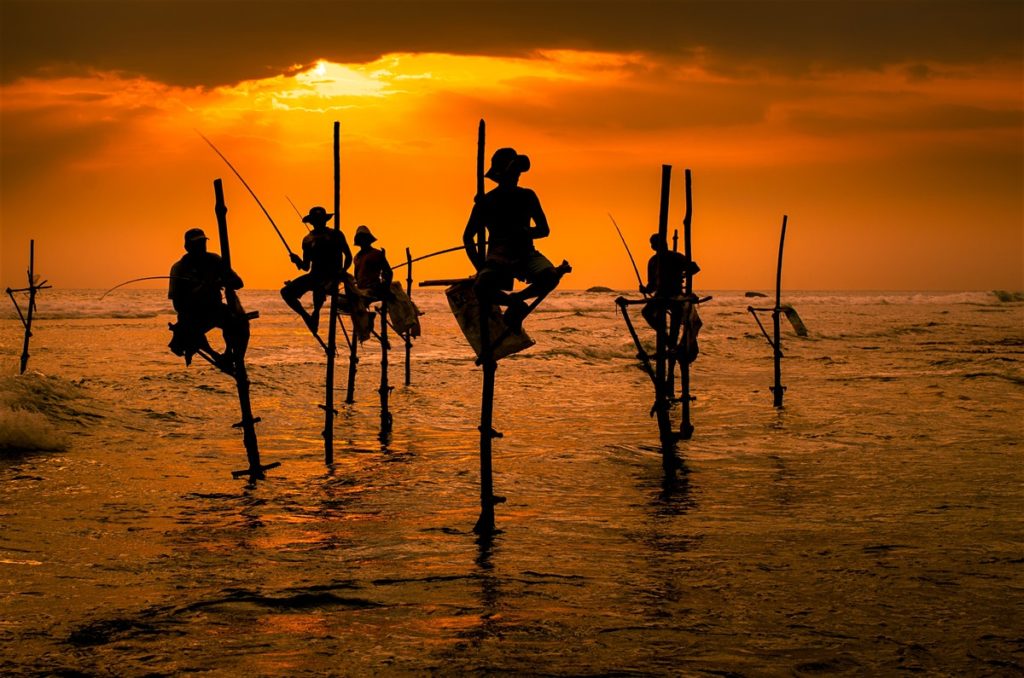
Editor’s Note: This is the first in a periodic series on the effects of the COVID-19 pandemic on tourism providers across the globe.
Back in the late 1960s, when I was still mostly fantasizing about globetrotting, I picked up a paperback book called Bargain Paradises of the World.
Although all the pictures were in black and white and the information inside was perhaps overly colorful, it was the kind of book that got my travel juices flowing.
One particular “paradise” that caught my eye was Ceylon, the tear-drop-shaped Indian Ocean island nation that has been known as Sri Lanka since 1972.
My fantasy Ceylon — which had been colonized by Britain until 1948 and was known in the West mostly for its tea exports — was pictured by Bargain Paradises as an idyllic place where… Continue reading
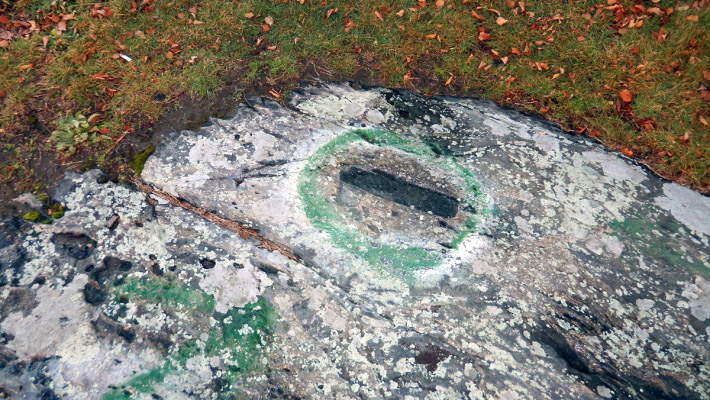
Following up on his Ipswich fried clams post — part I of a two-part series on the historic, scenic, and all-around inviting area of Ipswich and Essex, Massachusetts — contributing writer Bob Waite now asks us to back away from the table long enough to enjoy the other sometimes devilish delights the region has to offer.
By Robert Waite
Ipswich, MA – You can have a devil of a time in Ipswich, Massachusetts. Or at least the residents apparently did back in the 1740’s.
According to local legend, a visit by a famous English fire-and-brimstone preacher, the Rev. George Whitfield, to the town’s First Congregational Church, located atop Town Hill, attracted a crowd of thousands – and a curious Satan.
Whitfield, who had no sympathy for the devil, called Satan… Continue reading
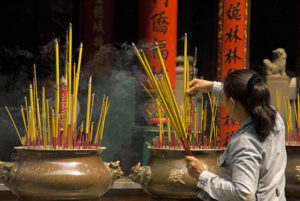
Thien Hau Pagoda Buddhist Temple in Saigon’s Chinatown. Photo by Dennis Cox/WorldViews
In Part I of Robert Waite’s two-part series on traveling to Vietnam, Vietnam Visit Stirs Emotions for Boomers, Bob recounted his recent visits to Hanoi and Halong Bay.
In this post, he travels to Saigon (Ho Chi Minh City) and the remarkable Cu Chi Tunnel complex dug by the Viet Cong outside the city — but much closer to it than you might imagine.
Saigon itself is a bustling city that evokes stark memories of the Vietnam War, but is also now a prime “foodie” destination and a place to drink at a bar made famous by big-name war correspondents:
By Robert Waite
Part II of a two-part series.
Ho Chi Minh City, Vietnam – The thing about name changes is that they often don’t stick. Take Mumbai, for example. The Indian national government decided that “Bombay” was… Continue reading
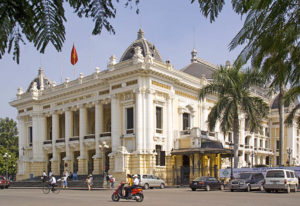
Hanoi’s 1911 Opera House is a prime example of the city’s French colonial architecture. Photo by Dennis Cox/WorldViews
In this post and the next, Contributing Writer Robert Waite recounts his recent journey to Vietnam, the country that helped define a generation of baby boomers.
Forty five years after the fall of Saigon, which effectively ended the more-than-a-decade-long Vietnam War, a visit to Hanoi still stirs emotions, whether you were pro- or anti-war in the 1960s and ’70s.
Yet even as long ago as 1997, when I last visited Vietnam, the majority of Vietnamese — born after the war — seemed to hold few if any grudges against Americans.
Our roving correspondent, himself a baby boomer, delves into the war history but also the sights and experiences that make Vietnam one of the most intriguing countries to visit in Southeast Asia today.
First up are the capital, Hanoi, and beautiful Halong… Continue reading
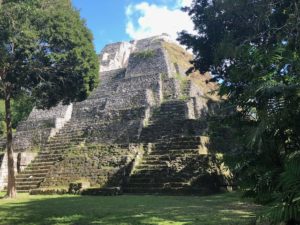
Steep steps lead to the top of temple 216 in Yaxha, but the view from the top is worth it. Photo by Robert Waite.
In the first part of this two-part series, contributing writer Robert Waite described his visit to Tikal, Guatemala, the enormous ruins of one of the world’s great archaeological wonders, which 2,000 years ago was larger than ancient Rome or Beijing.
In Part II of this series, Bob writes about his travels to another stunning Mayan archaeological site nearby — Yaxha — and finds humor and cultural insights amid the ancient pyramids.
By Robert Waite
On the morning we left Tikal we headed for Yaxha, 30 km (19 miles) to the southeast, with our new guide, Cesar Quinones.
Yaxha is Guatemala’s third largest Mayan archaeological site (after Tikal and El Mirador) and boasts 500 structures spread along a hilltop stretching about three km (two miles).
Located… Continue reading
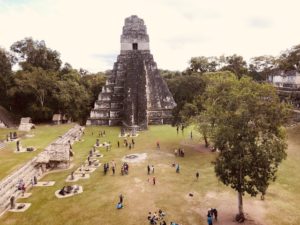
Tikal’s Temple I rises to a height of 154 feet (47 meters). Photo by Robert Waite.
For those planning their post-COVID travels, or who just like a good read, our roving contributing writer Robert Waite sets foot this time in the fabulous Mayan ruins of Tikal and Yaxha, which flourished two millennia ago in the jungles of what is now Guatemala.
It was the New York of its day, a massive complex complete with “skyscraper” temples, plazas, and palaces. When it seems safe to go, you may well want to add it to your future travel plans.
By Robert Waite
Tikal, Guatemala – Anyone who still buys into the myth that the Americas needed to be discovered by Columbus to be “civilized” has not wandered among the pyramids or across the expansive plazas of Tikal.
Beginning around 350 B.C. and stretching into the 5th century A.D., at a time… Continue reading










